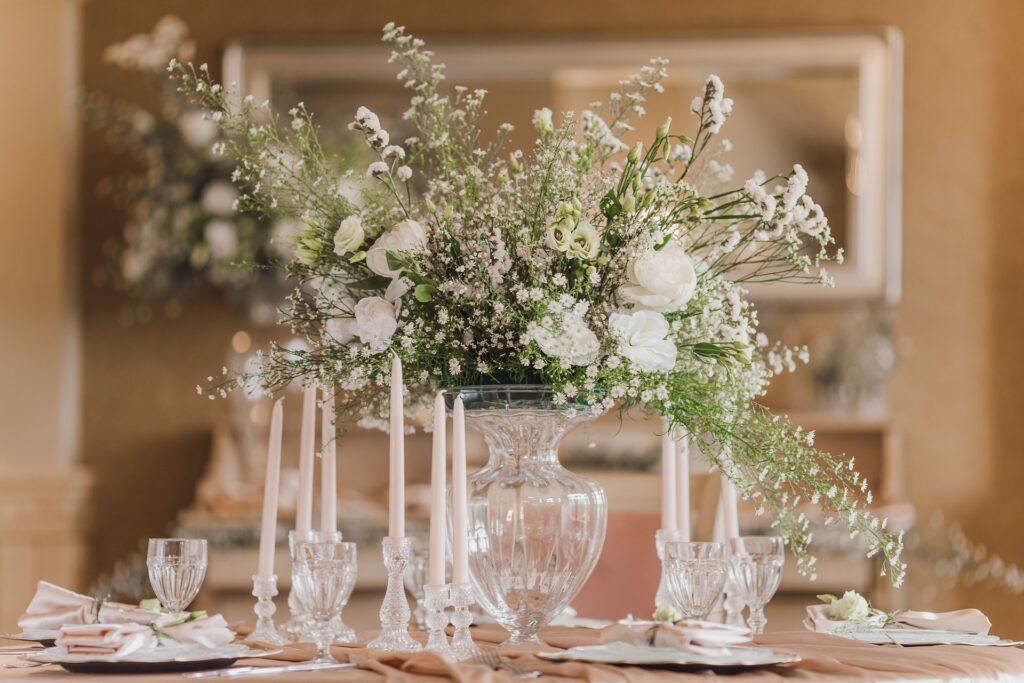Event design is a creative process of transforming a blank canvas into a beautiful environment that captivates the audience and makes the event memorable. It involves everything from the layout, decor, lighting, and ambiance to the overall atmosphere of the space. Event design is not just about decoration, but it is about creating a unique experience for the guests that leaves a lasting impression. The event design industry is constantly evolving, and it’s essential to stay updated with the latest trends and techniques to create events that are innovative and exceptional.
Importance of Event Design
The event design plays a crucial role in the success of an event. The design creates the first impression of the event and sets the tone for the entire experience. It helps in creating an atmosphere that resonates with the audience, whether it’s an intimate wedding, a corporate event, or a product launch. The design creates a visual impact that conveys the theme and purpose of the event, and it helps in engaging the guests and creates a memorable experience.
The art of event design is not just about creating a beautiful environment, but it’s also about addressing the practical aspects of the event. The design needs to be functional, safe, and accessible for all guests. It’s essential to consider factors like the size of the venue, the number of guests, the duration of the event, and the budget while creating the design. A well-designed event can enhance the guest experience, increase brand recognition, and leave a lasting impression on the guests.
Transforming Spaces into Beautiful Environments
Transforming a space into a beautiful environment requires a creative approach and attention to detail. The designer needs to understand the purpose and theme of the event and create a design that aligns with it. The first step in event design is to conduct a site visit to understand the layout of the space, the natural lighting, and the overall ambiance. The designer needs to evaluate the space and identify the strengths and weaknesses of the location.
The next step is to create a design concept that reflects the purpose and theme of the event. The design concept includes everything from the color palette, decor elements, lighting, furniture, and overall ambiance. The designer needs to consider the guest experience while creating the design, and it should be an immersive experience that captivates the audience.
The designer needs to pay attention to every detail, from the placement of furniture to the positioning of decor elements. The layout needs to be functional and accessible for all guests, and it should create a flow that guides the guests through the event. The designer needs to create focal points that draw attention and create a visual impact. It’s essential to use a variety of textures, colors, and materials to create a layered effect that adds depth and richness to the design.
Event Design Trends
The event design industry is constantly evolving, and it’s essential to stay updated with the latest trends and techniques to create events that are innovative and exceptional. Some of the top event design trends of 2023 include:
- Sustainability – Eco-friendly event design is becoming increasingly popular, and designers are using recycled and repurposed materials to create sustainable designs. Sustainable design not only benefits the environment but also enhances the guest experience by creating a unique and authentic design.
- Virtual and Hybrid Events – With the rise of virtual and hybrid events, event designers are creating designs that cater to a virtual audience. They are using technology to create immersive experiences that engage the audience and create a sense of community.
- Bold Colors – Bold and vibrant colors are making a comeback in event design. Designers are using colors like electric blue, bright pink, and neon green to create bold and dramatic designs.
- Biophilic Design – Biophilic design is all about incorporating nature into the design. Designers are using elements like plants, natural materials, and organic shapes to create a calming and peaceful atmosphere.
- Mixed Materials – Mixing different materials like wood, metal, and glass is a popular trend in event design. This creates a layered effect that adds depth and texture to the design.
- Custom Lighting – Custom lighting is an essential element in event design, and designers are using advanced lighting technology to create unique and immersive experiences. Lighting can transform a space, and it’s essential to create a design that utilizes lighting to its full potential.
- Interactive Experiences – Interactive experiences are becoming increasingly popular in event design. Designers are creating experiences that engage the audience and create a sense of participation. This could include anything from virtual reality to interactive installations.
Event Design Tips
Creating a successful event design requires attention to detail, creativity, and practicality. Here are some event design tips to help you create a memorable and successful event:
- Start with a Concept – The first step in event design is to create a design concept that aligns with the purpose and theme of the event. The concept should guide the design process and ensure that every element of the design is cohesive and aligned.
- Consider the Guest Experience – The guest experience is essential in event design, and the design should be created with the guest in mind. It’s essential to create a design that is functional, accessible, and engaging for all guests.
- Use Lighting to its Full Potential – Lighting is an essential element in event design, and it can transform a space. It’s essential to create a lighting design that enhances the guest experience and creates a unique atmosphere.
- Incorporate Nature – Biophilic design is a popular trend in event design, and incorporating natural elements like plants and organic shapes can create a calming and peaceful atmosphere.
- Don’t Be Afraid to Mix Materials – Mixing different materials like wood, metal, and glass can create a layered effect that adds depth and texture to the design.
- Use Technology to Create Immersive Experiences – Technology can be used to create interactive and immersive experiences that engage the audience and create a sense of participation.
- Stay Updated with the Latest Trends – The event design industry is constantly evolving, and it’s essential to stay updated with the latest trends and techniques to create events that are innovative and exceptional.
Conclusion
The art of event design is all about transforming a blank canvas into a beautiful environment that captivates the audience and creates a memorable experience. The event design industry is constantly evolving, and it’s essential to stay updated with the latest trends and techniques to create events that are innovative and exceptional. By understanding the purpose and theme of the event, considering the guest experience, and using creative elements like lighting, natural materials, and technology, event designers can create immersive experiences that engage the audience and leave a lasting impression.

